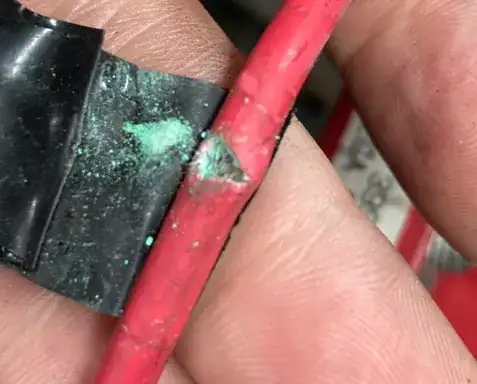After disconnecting the negative battery terminal, if you cut out the corroded section of wire and then make a proper solder joint -- which begins with a secure physical connection between the wires to be joined -- the resistance of the soldered cable will for all practical purposes be indistinguishable from the original wire. Yes, solder has a higher resistance than copper, but current in a properly soldered joint passes through solder for only a small fraction of a millimeter because the two wires to be joined are already physically touching. Any added resistance from solder is completely trivial.
However, soldered connections in stranded wire that are subjected to vibration and physical bending can lead to fracture of the wire through metal fatigue. If you're planning to keep the car for just a couple of years, solder should be fine in the short term. But if this car is a keeper and if this wire is subject to movement because of engine movement, a better choice would be to cut out the corroded section, then use a split bolt connector. These are especially useful for high-current applications. I've used them on heavy battery cables to connect high current loads, and they have lasted the life of the vehicle. Insulate with many layers of high quality electric tape and you'll never have a problem with it.
